Reimagining sex education impartment in India.
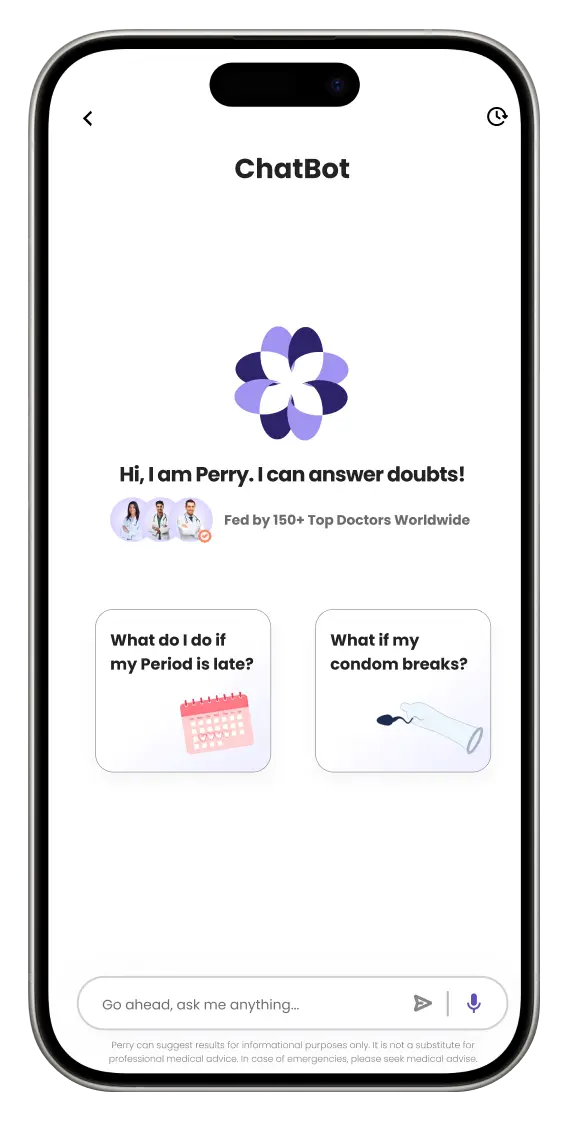
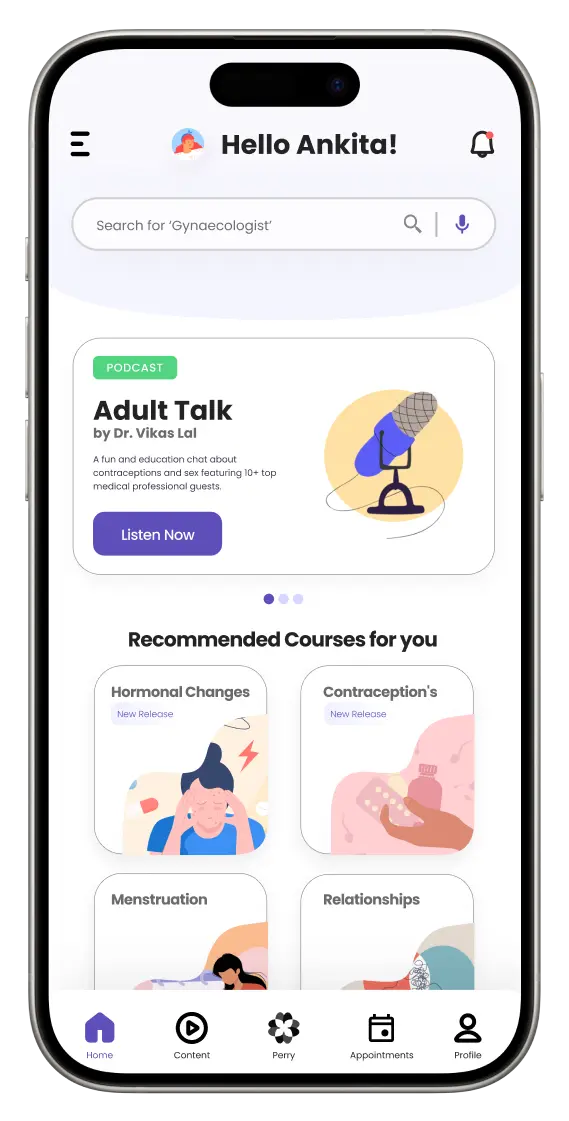
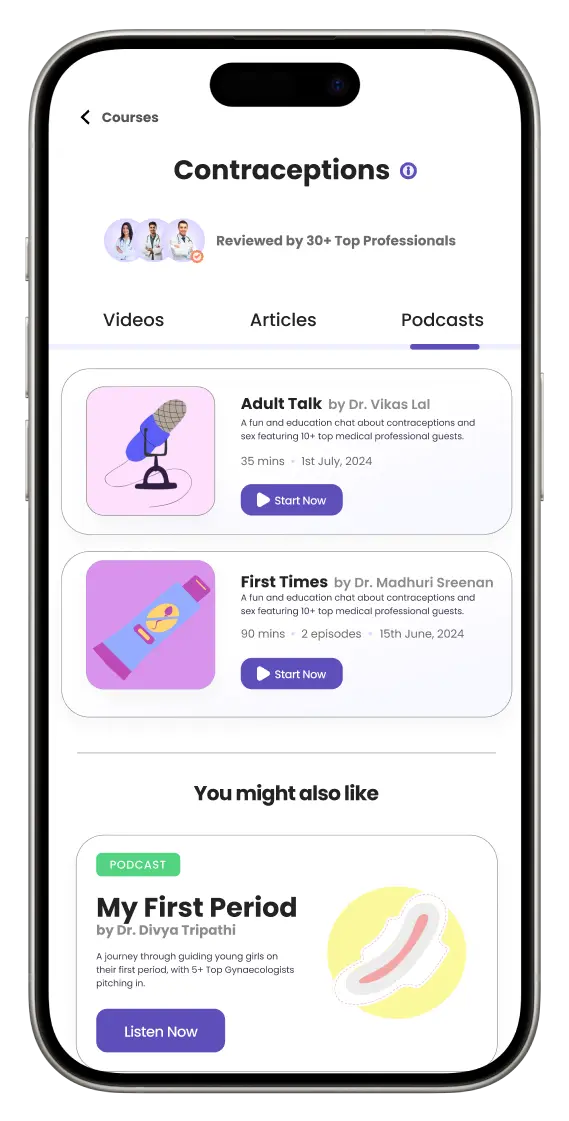
-

Project Role
UI/UX Designer (Generalist)
-

Project Details
18 Weeks
-

Project Type
Classroom Project (2022)
-

Project Deliverables
User Research Audit, Interactive Prototype, Design Ideation.
-

Key Activities
User Research, Competitive Study, User Interviews, Ideation, Concept Development.
“Lack of awareness and
impartment of
sex education for teenagers
and young adults in India.”
Our team decided to begin the project by conducting desk research to deepen our understanding of the field of sex education.
-
What
Sex Education is the learning about a broad
variety of topics related to sexuality.
-
Where
Sex education is typically taught in schools,
either as part of curriculum or separately,
or is addressed by the parents to the child.

-
How
Sex education can be taught
through instruction, digital platforms,
print materials,workshops or discussions
with healthcare professionals.


-
Who
Sex Education is the learning about a broad
variety of topics related to sexuality.
Exploring various aspects of sex education during desk research.
Our team uncovered and collated a range of useful and applicable findings during the desk research phase.
-

Teenagers face discomfort during
discussions regarding sex and sexuality
with parents or elders. -

Ambiguity and confusion regarding sexual health information for the teenagers and young adults.
-
64%
Teens preferred to social media
and online resources when they want
information on sex education.Source : Article by Pew Research Centre, 2022
-

Importance of receiving sex education at an early is paramount, and leads to a safe lifestyle.
- “Getting my doubts and concerns addressed.”
1. Chat Bot Feature
An AI chatbot designed to provide users with
accurate sex education answers based on their
doubts and questions. - “An accessible source of sex-health information.”
2. Courses Section
Age-appropriate, and informative courses built on
credible information, addressing multiple topics
related to sex education - “A fun and interesting way to learn about sex education.”
3. Interactive Learning
Engaging quiz activities following each course
to enhance knowledge retention, assess learning
outcomes, and ensure accurate comprehension
of the information.
We sent out a user survey to 15 children, young adults and
teenagers between the age of
9 to 13 to gain more insights about their experience with
sex education impartment.
-
15 out 15 participants said that they had received sex education in school but
only 19 % of users found it to be useful

-
12 out 15 participants felt that the sex education they received was
poor, average or below par.

-
11 out 15 participants said that area of sex education has been
never discussed with their parents.

Insights from User Survey Responses
Our team identified stakeholders involved during the sex education impartment that were directly or indirectly influences the learning experience.
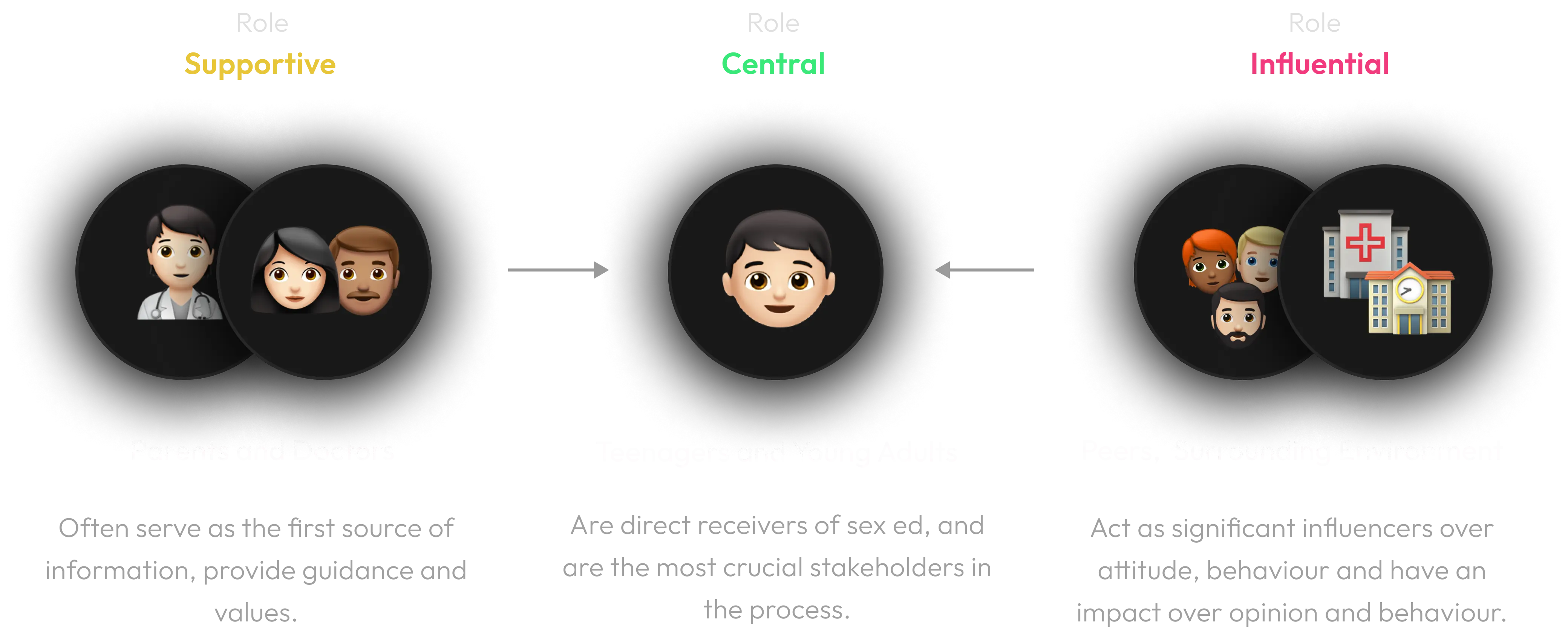
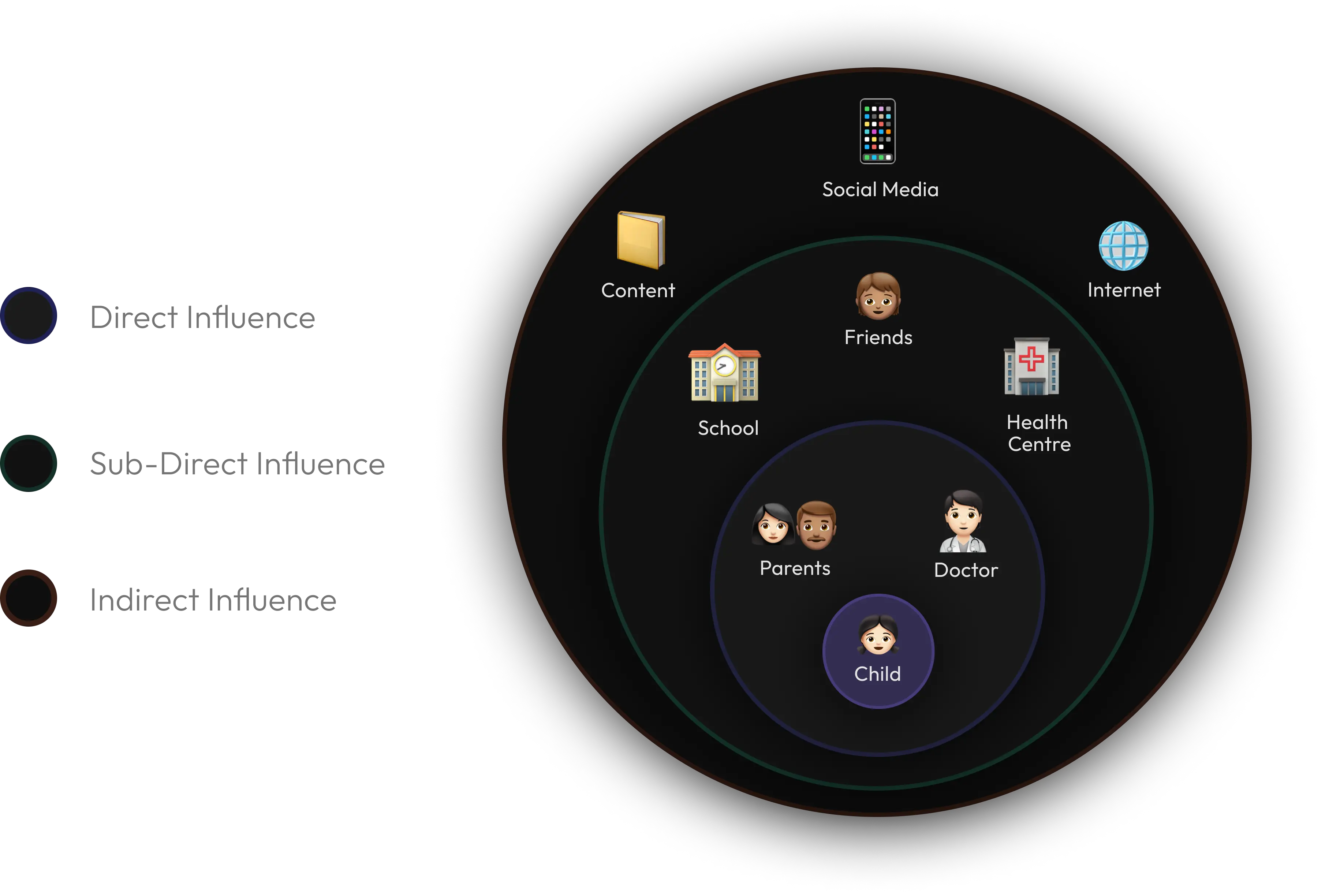 Understanding the influence of secondary stakeholders on the
primary stakeholder (Teenagers).
Understanding the influence of secondary stakeholders on the
primary stakeholder (Teenagers).
Our team conducted user interviews to gain a deeper understanding of stakeholder experiences and to uncover valuable insights and findings.
Interview Details
-
 25 participants
25 participants
-
 One-On-One Interviews
One-On-One Interviews
-
 Remote (conducted online)
Remote (conducted online)
Stakeholders Involved
-
 Teenagers
Teenagers
-
 Parents
Parents
-
 Medical Professionals
Medical Professionals
What we focused on during the interviews.
 Teenagers
Teenagers - current knowledge and sources of information.
- perceptions and opinions for sex education,
- preferences and requirements when learning sex education.
 Parents
Parents - expectations from sex education sources.
- Opinions, concerns, fears regarding their children learning sex education.
- preferences in learning methods/ approaches for sex education.
 Medical Professionals
Medical Professionals - observations, experiences for impartment of sex education.
- importance of early and accurate sex education impartment.
- sources of medically accurate sex education information.
Research Objectives for different stakeholders.
We consolidated the interview data to identify important insights from the interviews.
-
Parents & Doctors felt there was a mistrust in the
secondary sources of sex education for their children.

-
Children felt that sex eduction provided in schools
wasn’t beneficial to them and superficial.

-
Parents have concerns regarding the age-appropriateness
of the content available on the internet.
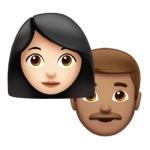
-
Children preferred to talk to their friends or social
media over parents and health professionals

-
Teenagers say they have a general curiosity about sex
education which is vague, not too specific in general.

-
Doctors observe that there is a lack of consensus on the
content, what should be included in the sex education.

-
Parents feel that there is ambiguity in the timing of
sex education : don’t know when they should start, and
at what age would the content be relevant.

-
Some parents showed concerns which were rooted in
cultural, or societal beliefs.

-
Some parents showed concerns which were rooted in
cultural, or societal beliefs.

-
Doctors observed the lack of resources available for
training of teachers and professionals .

-
Children felt that there could be better engaging and
interesting methods of learning sex education

Primary Research findings from different stakeholders.
-

The use of generalized content and a one-size-fits-all
teaching method in sex education is ineffective.Most teens found the sex education content too general and
inadequate for addressing their needs. -

Fear of Judgement makes teenagers reluctant to
ask sex-ed related questions to adults.Teenagers often avoid asking adults sex education questions,
significantly impacts their willingness to seek information. -

Secondary sources of information lack credibility &
age-appropriateness, that can be misleading.Most doctors felt that teens end up confused and misled after
consuming content which was not relevant to them. -

A clear understanding of information awareness
and methodology is key for effective facilitation.Doctors noted most parents lacked information awareness and were
unaware of optimal methods of sex education impartment.
Based on the insights we gathered, we created a user journey
map detailing stakeholders'
experiences in learning about sex education, with a focus
on identifying areas of friction.
- I really wonder what is *********

has doubts and queries regarding sex education and sexuality.
Confusion, uninformed, curious - but how do I even talk about this with mom dad?
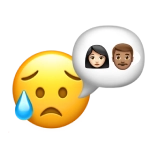
uncomfortable about asking these questions to parents, doctor, family
Anticipation, Anxiety, Fear, Nervousness - Lets see if I can find it on.............

uses the internet and social media for finding relative information about sex ed.
Excitement, Shock, Surprise, Thrill - Oh wow. I wonder what else.................

ends up consuming misinformation and does not find what he was looking for.
Confusion, Uninformed, Curious
User Journey Mapping : Teenagers looking for sex education related information.
How might we ensure a way for users to
directly access age
appropriate and credible sex education related
information to
ensure effective learning?
User Perspective
How might we design an
accessible product/service which
will
engage users through the content focusing on
user safety and
anonymity.
Product Perspective
Our team used the "How Might We" statements as a foundation
to brainstorm and
explore potential solutions that aligned with the identified
requirements.
Ideation and brainstorming different ideas that could be possible solutions.
Our team used the position mapping technique to evaluate and
determine the most
appropriate idea for advancing to concept development.
-
 High Accessibility and Scalability.
High Accessibility and Scalability. An app would be accessible due to widespread use smartphones and growing internet availability.
-
 Supports Privacy and Anonymity
Supports Privacy and Anonymity An app could offer a safe, anonymous platform, encouraging engagement without fear or stigma.
-
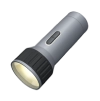 Supports Privacy and Anonymity
Supports Privacy and Anonymity An app could offer a safe, anonymous platform, encouraging engagement without fear or stigma.
Using metrics and choosing final idea for further concept development
We applied multiple ideation methods to evolve, refine, and make progress and develop the selected idea further.
- Mo
Must have
Personalised learning paths, interactive and engaging content, expert reviewed information, privacy controls, age appropriate content
- S
Should have
Gamification elements, rewards, Parental resources, Live expert sessions, Resource library, multilingual support, simple language and instructional method
- Co
Could have
Downloadable modules, AI chatbot, VR based learning, peer communities, Content sharing, Interactive inbuilt games
- W
Won't have
In app purchases for teenagers, social media integration, user analytics, dashboard, cross-sale/marketing,
We employed position mapping to determine and prioritize the key features for the mobile learning app.
-
 Impact
Impact
depends on how users will
consume content, and learn about
sex education information, -
 Feasibility
Feasibility
is affected by factors such as technological viability, available resources, financial investments.
Once the features were finalized, our team focused on establishing the information architecture for the mobile learning app.
Onboarding
-
Users select their age for age-appropriate
content,
ensuring a safe and relevant experience. -
They answer questions about their interests
to receive
tailored content, enhancing engagement. -
The process ensures privacy by avoiding
personal data,
creating a judgment-free learning environment. Avatar
selection adds personalisation while maintaining anonymity.
Parent’s Section
A platform that provides parents with essential
sex education resources for their children.
It offers
courses and materials to empower parents with
the
knowledge needed to educate their children
accurately and responsibly.
Consult with Doctors
A doctor booking feature that enables parents to schedule appointments and consultations with different specialists and health professionals for their children.
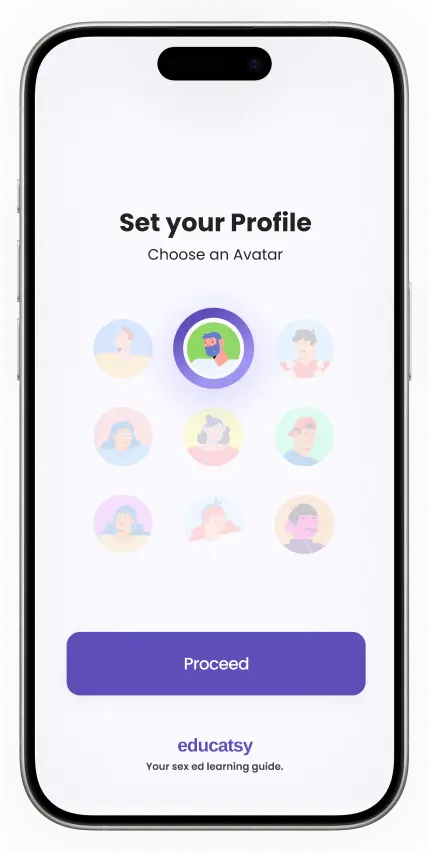
Teenager: Onboarding
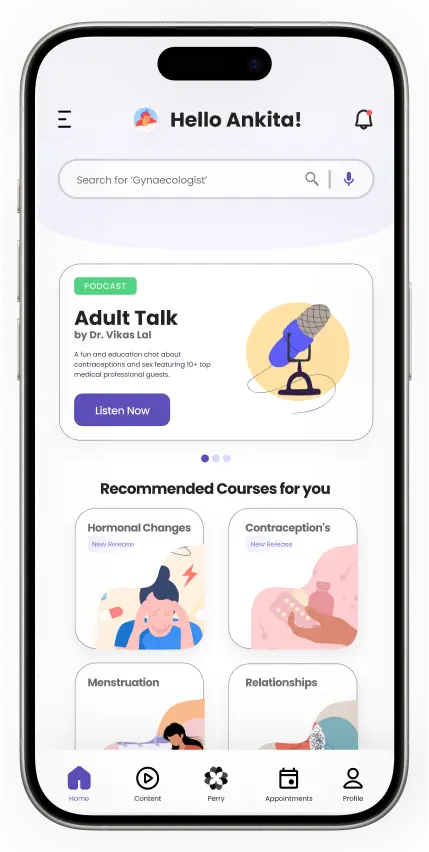
Home Screen

Courses Screens
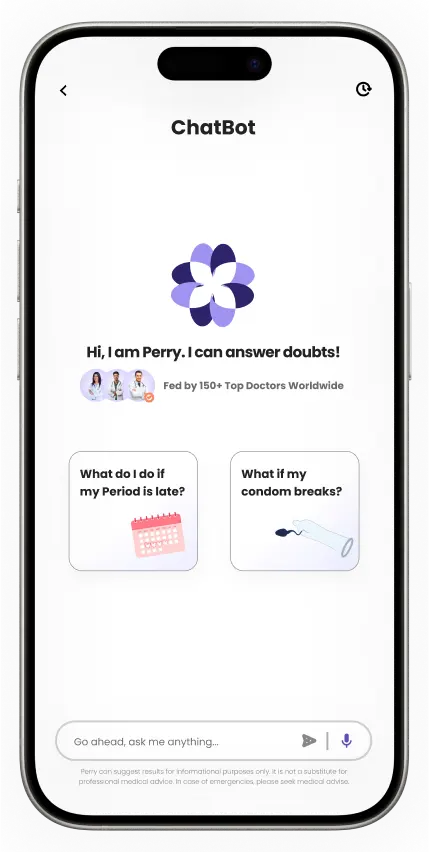
Chatbot Screen
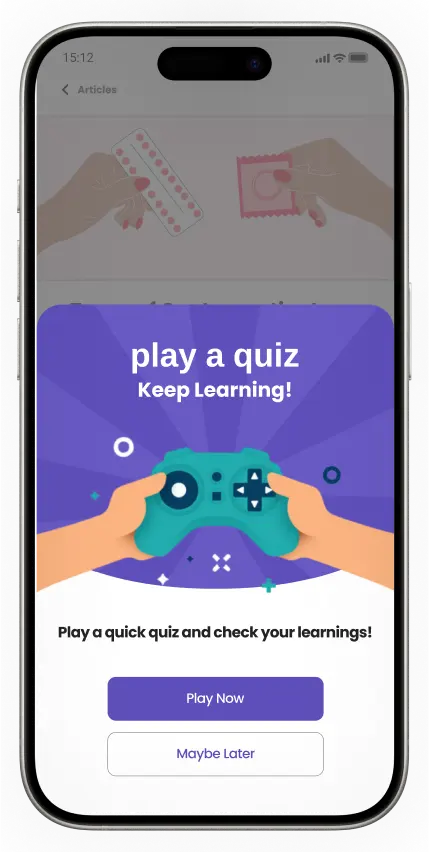
Post-Course Quiz Screen
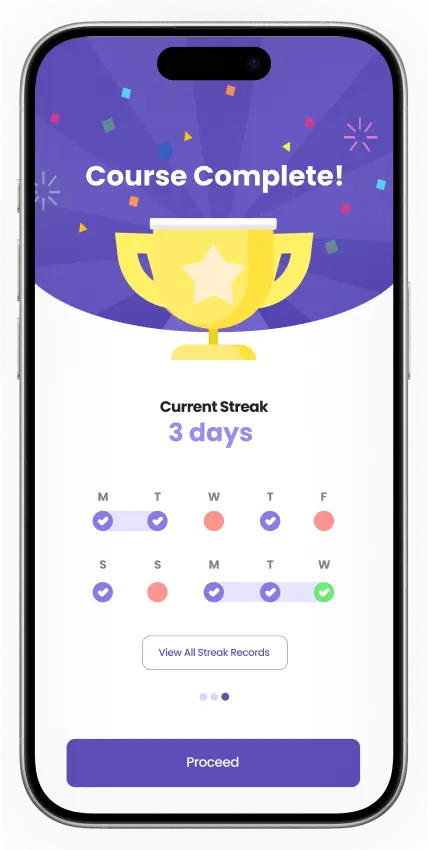
Course Completion Screen
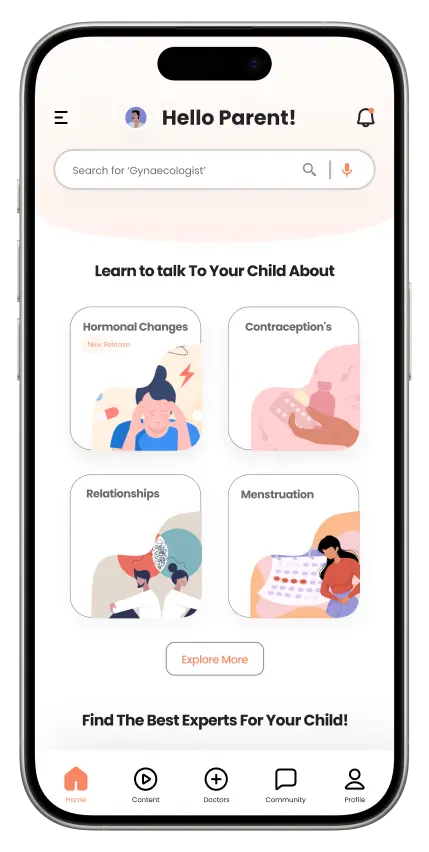
Parents Section Home Screen
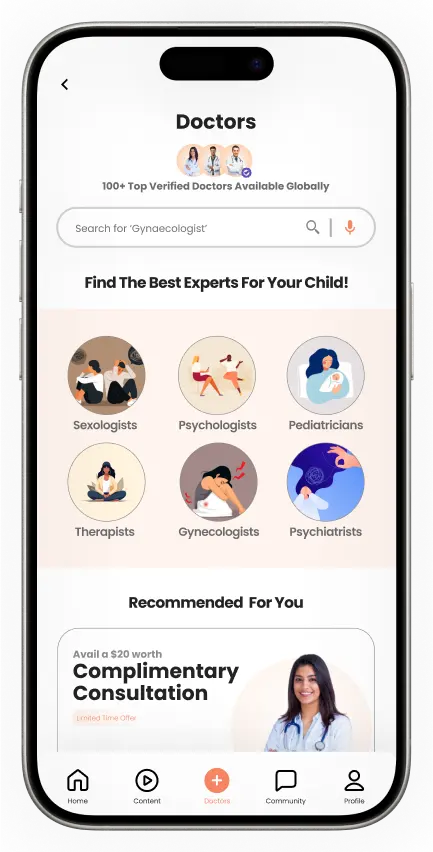
Doctors Section Screen
Using a high-fidelity prototype, our team conducted testing
with five participants through
an in person testing study. Leveraging the Figma Mirror app,
we evaluated key features by
breaking down use cases into simple, actionable tasks for participants
to follow.
Key Focus Area
-

User Intuitiveness
Assessed how easily participants could navigate screen functionalities and
interact with UI elements. -

Iconography and UX Writing
Measured users' understanding of icons and language within the app.
-

Task Efficiency
Monitored the time taken to complete each task.
-

Task Progression and Completion
Evaluated users’ ability to successfully complete and progress
through assigned tasks.
Throughout this project, I focused on empathizing with the target users, and understand their problem to identify insights. The proposed design intervention a aims to offer engaging, age-appropriate sex education for teenagers while respecting their privacy, and focuses on empowering teens to explore sensitive topics and make informed decisions.
Key Learnings
-
 Desk Research
Desk Research
Thorough and precise desk research was invaluable in uncovering key insights and defining the appropriate
scope of work. -
 Focused Research
Focused Research
Our team refined several
questions and conducted
pilot interviews to ensure
thorough preparation for the
main interview sessions. -
 Cultural Sensitivity
Cultural Sensitivity
It's essential to approach
sensitive topics with respect
and appropriate language,
particularly when engaging
with teens and parents.
